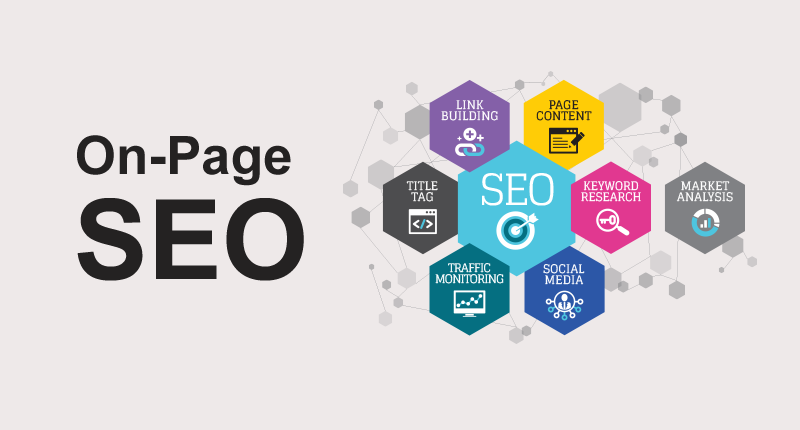The Art of On-Page Optimization: How to Optimize Your Website for Search Engines

On-page optimization refers to the process of optimizing individual web pages in order to rank higher and earn more relevant traffic in search engine results. On-page optimization is an important part of SEO, as it helps search engines understand the content and purpose of your website, and can impact your website's visibility and ranking in search results.
Step 1: Optimize Your Page Titles and Headings
The page title and headings are some of the most important elements of on-page optimization. They should accurately and concisely describe the content on the page and include your target keywords. Use unique and descriptive page titles and headings, and avoid using the same title and heading for multiple pages on your website. You should also make sure to use your primary keyword in the beginning of your page title and heading, as this can help it stand out in search results. You can use up to 60 characters for your page title, and up to 70 characters for your heading, so it's important to be concise and to the point.
Step 2: Optimize Your Meta Descriptions
The meta description is a brief summary of the content on your page that appears in search results. While it doesn't directly impact your search ranking, it's an important element of on-page optimization because it can influence the click-through rate (CTR) of your website. A well-written meta description that includes your target keywords and a call to action can help encourage users to click on your website in search results. Aim for a meta description of around 160 characters or less.
Step 3: Use Header Tags Appropriately
Header tags (H1-H6) are used to define the headings and subheadings of a page. They help search engines understand the structure and hierarchy of your content, and can also improve the readability of your website for users. Use header tags appropriately and make sure to include your target keywords in your headings and subheadings. It's generally recommended to use only one H1 tag per page, and to use the other header tags (H2-H6) to define the hierarchy of your content.
Step 4: Optimize Your Images and Alt Text
Optimizing your images and alt text can help improve the accessibility and SEO of your website. Alt text is a brief description of an image that is displayed if the image cannot be displayed. It's important to include alt text for all images on your website, as it can help search engines understand the content of your images and can improve your website's ranking in image search results. You should also use descriptive, keyword-rich file names for your images and use appropriate file types (such as .jpg or .png).
Step 5: Use Internal and External Links Effectively
Internal and external links can help improve the SEO of your website by establishing the relevance and authority of your content. Internal links are links that point to other pages within your website, and can help search engines understand the structure and hierarchy of your content. External links are links that point to other websites, and can help demonstrate the credibility and authority of your content. Use both types of links appropriately and make sure to use descriptive, keyword-rich anchor text for your links.
Step 6: Use Clean URLs and Proper Redirection
Clean URLs and proper redirection can help improve the usability and SEO of your website. Clean URLs are easy to read and understand, and should include your target keywords and a clear hierarchy. Proper redirection involves using 301 redirects to redirect old or broken URLs to new or updated URLs, and can help improve the user experience and prevent crawl errors. Use clean URLs and proper redirection to improve the usability and SEO of your website.
Step 7: Use Social Meta Tags
Social meta tags are tags that are used to control how your website appears when it is shared on social media platforms. These tags include the title, description, and image that are displayed when your website is shared on social media. By using social meta tags, you can control the appearance of your website on social media and improve its visibility and engagement on these platforms. Use social meta tags to improve the social media presence of your website.
Step 8: Monitor and Adjust Your On-Page Optimization
On-page optimization is an ongoing process. As your website and industry evolve, you may need to adjust your on-page optimization strategy. Use tools like Google Analytics and Search Console to track the performance of your website and make adjustments as needed. By monitoring and adjusting your on-page optimization, you can improve the SEO and usability of your website over time.
By following these steps, you can master the art of on-page optimization and optimize your website for search engines. For more information on on-page optimization, check out the following resources:



0 Comments